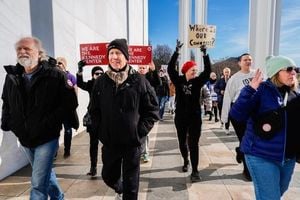As Bonfire Night approaches in Scotland, Edinburgh and Glasgow are taking unprecedented steps to curb the chaos that has marred previous celebrations. Firework control zones (FCZs), first introduced in Edinburgh last year, have now come into force, aiming to prevent the kind of disorder that has plagued communities and endangered both residents and emergency services. These new regulations, which ban the setting off or throwing of fireworks within designated areas between October 31 and November 9, 2025, represent a determined effort by city officials and law enforcement to restore safety and order around one of the year’s most anticipated – and sometimes dreaded – festivities.
Edinburgh earned the distinction of being Scotland’s first city to implement FCZs following a series of alarming incidents involving fireworks and pyrotechnics. Last year, neighborhoods like Niddrie witnessed clashes between youths and riot police, resulting in injuries to officers, damaged buses, and widespread fear among locals. According to BBC Scotland, Lothian Buses was forced to withdraw nine services due to the unrest, and Police Scotland reported that 62 officers were injured during the period of disorder. The situation was so severe that the City of Edinburgh Council voted in August 2024 to make FCZs a permanent fixture, utilizing new powers granted to local authorities after a major riot in Dundee in 2022.
But the path to peace has been anything but straightforward. The boundaries of these zones have sparked controversy, with some streets – such as Hay Avenue in Niddrie – split down the middle, leaving one side protected and the other exposed. Council leader Jane Meagher acknowledged the arbitrary nature of some boundaries, admitting to BBC Scotland News, “We know they're not a catch all solution which is why we've been working closely with partners to make sure there are a range of measures in place so that local communities can celebrate Bonfire Night safely.”
Despite these challenges, the city is pressing ahead with a multi-pronged approach. Meagher recently published an open letter to Edinburgh residents, urging them to attend only sanctioned, organized events and warning that unauthorized bonfires would be dismantled. Council workers and community volunteers are proactively clearing hazardous materials and offering waste collection to reduce the risk of deliberate fires. “We’re taking proactive steps again this year, working closely with our partners to put robust plans in place,” Meagher wrote. “One important measure is the continued use of FCZs, which were introduced in response to community concerns. Based on data and evidence, FCZs are about making sure celebrations happen in the right way and in the right place and they’ve already proven to be effective in previous years.”
The restrictions are not just about fireworks. Five new dispersal zones have been introduced in Corstorphine, Moredun, Gracemount, Longstone, and Sighthill, allowing officers to instruct groups of two or more people to move on, further strengthening the framework to deter reckless and antisocial behavior. Violent incidents in previous years, including in areas such as Gilmerton and Gracemount, have led to increasing calls for tougher enforcement and a rethink of how Bonfire Night is celebrated.
In a bid to tackle the issue at its source, Edinburgh Council and Police Scotland secured pledges from all but two local firework retailers not to sell fireworks this year. Meagher praised this voluntary effort, noting that it addresses the supply side of the problem. The law itself backs up these efforts, with misuse of fireworks in FCZs punishable by fines up to £5,000 or custodial sentences of up to six months. However, organized and licensed displays remain exempt from these restrictions, allowing communities to enjoy the spectacle in a safe, controlled environment.
Yet, not everyone is convinced that FCZs alone will solve the problem. David Kennedy, general secretary of the Scottish Police Federation, told BBC Radio’s Good Morning Scotland, “They'll make a difference to noise levels for law-abiding citizens, but to those that want to break the law, they won't make any difference. They will help the police identify areas where fireworks are coming from, but it will still be a difficult job for police to try and catch those individuals. We have to invest in community policing, in the safety of our country if we want to have that long-lasting effect.”
Police Scotland has responded with Operation Moonbeam, a targeted initiative launched earlier this month to tackle firework-related crimes during the Bonfire Night period. The force seized about 200kg of pyrotechnics from a storage locker in West Lothian on October 15, leading to court appearances on conspiracy charges. Just days later, a tonne of fireworks worth £42,000 was discovered in a van in Rosyth, Fife, resulting in the arrest and curfew of a 24-year-old man. To further support their efforts, officers will for the first time be equipped with body-worn video cameras, part of a national rollout of the technology.
Assistant Chief Constable Tim Mairs highlighted the impact of last year’s measures: “Last year saw a reduction in serious disorder offences and a dramatic reduction in the number of officers injured. However, we still saw unacceptable levels of violence and disorder in parts of Glasgow and Edinburgh, leaving communities in these areas in a state of fear and alarm. This was wholly unacceptable, and we immediately launched a major criminal investigation to identify those responsible and bring them to justice.”
Glasgow, witnessing the results in Edinburgh, is set to introduce its own FCZs for the first time, covering parts of Broomhouse, Govanhill, and Pollokshields from November 1 to November 10, 2025. Community Safety Minister Siobhan Brown emphasized the Scottish government’s commitment, stating, “Misuse of fireworks puts communities and emergency services at risk and will not be tolerated. While Police Scotland reported a reduction in serious disorder on Bonfire Night last year, the Scottish government will continue to support the police and courts in taking firm action against those who do break the law.”
Authorities are also appealing directly to parents, urging them to prevent children from engaging in firework-related antisocial behavior. According to The Herald, a joint letter from Police Scotland, Edinburgh Council, the Scottish Fire and Rescue Service, and Lothian Buses reminded families that many of last year’s perpetrators were minors. In a positive step, Police Scotland and the youth charity Fearless hosted a youth summit, giving young people a platform to share their perspectives and help shape a social media campaign on firework safety. Funding for alternative activities and youth engagement programs has been increased, aiming to provide positive choices and discourage anti-social behavior.
For those still wishing to enjoy the spectacle, sanctioned community fireworks events are scheduled for November 5 in Craigmillar, Currie, and Balerno. Council teams and volunteers will continue working up to Bonfire Night, clearing hazardous materials, tackling fly-tipping, and offering free bulky waste collections to minimize risks.
As Scotland’s cities tighten their grip on firework misuse, the hope is that these combined efforts – from stricter laws and targeted enforcement to community engagement and youth outreach – will finally restore Bonfire Night to a celebration that unites rather than divides. The coming days will reveal whether these measures can truly turn the tide on a tradition that, for too long, has burned out of control.




